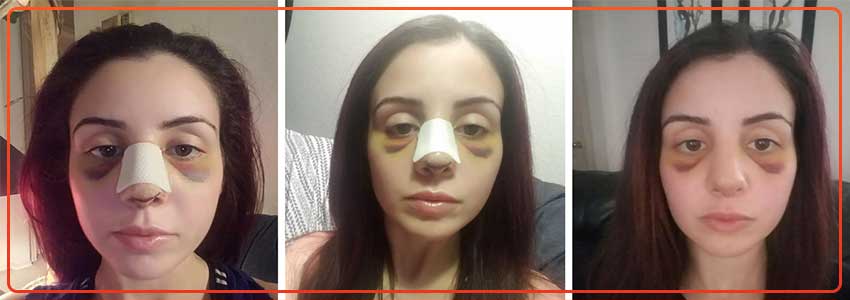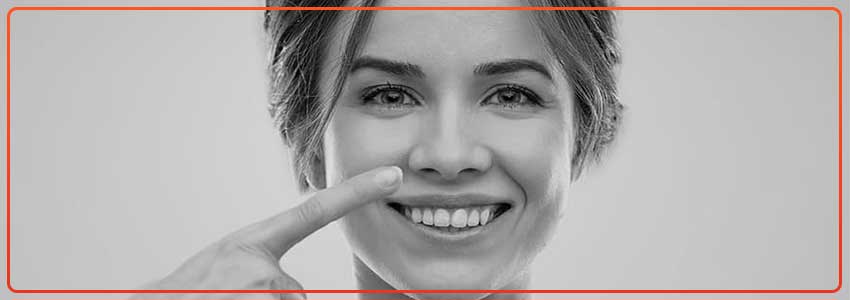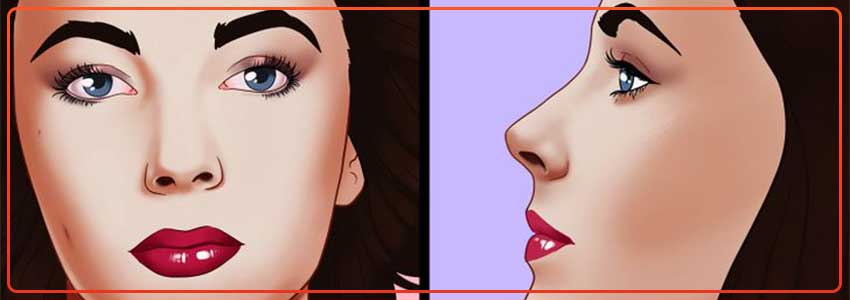There’s no doubt that a nose job can be life-changing. It can boost your confidence, make you feel better about yourself, and even improve your overall health. But what happens when things go wrong? Unfortunately, sometimes things can go wrong during a nose job surgery, and the results can be devastating. In this blog post, we’ll explore some of the most horrifying nose job gone wrong stories out there. We’ll also take a look at what you can do if something goes wrong with your surgery. So without further ado, let’s get started!
What Happens When Nose Jobs Go Wrong?
There are a few different things that can go wrong during a nose job, and the results can be disastrous. One of the most common problems is that the surgeon accidently cuts too deep, which can result in damage to the underlying structures of the nose. This can lead to a host of problems, including trouble breathing, an increased risk of infection, and even paralysis.
Another common issue is that the surgeon fails to properly shape the nose, which can leave the patient with an unattractive appearance. In some cases, this can be fixed with a revision surgery. However, in other cases, the damage is permanent.
Finally, there is always the risk of infection, which can occur with any surgery. If not treated promptly, an infection can lead to serious health complications, including sepsis.
Nose Internal Issues
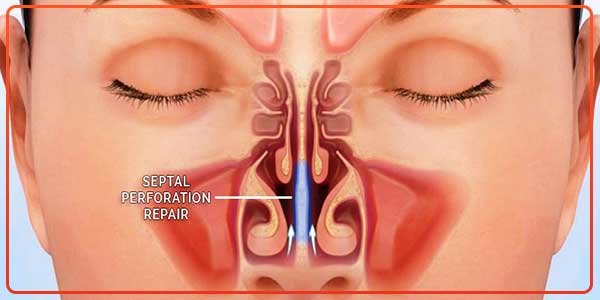
One of the most serious complications that can occur during a nose job is damage to the internal structures of the nose. This can happen if the surgeon accidently cuts too deep, and it can have a devastating impact on the patient’s health.
If the internal structures of the nose are damaged, it can lead to a variety of problems, including trouble breathing, an increased risk of infection, and even paralysis. In some cases, the damage is so severe that the patient has to be placed on a ventilator.
If you have damage to your internal nose structures, it’s important to seek medical attention immediately. This is a serious condition that can have life-threatening consequences if not treated promptly.
1- Infection
After a rhinoplasty, infection is unusual and can be treated with antibiotics. It may require particular care and attention from both the surgeon and anesthetist.
2- Excessive bleeding (hemorrhage)
Excessive bleeding can occur during or immediately after surgery. It’s usually controlled with local pressure, but may require packing (gauze or other materials) to be placed inside your nose.
3- Breathing Problems
temporary difficulty breathing through your nose may occur immediately after surgery. This is usually due to swelling and will improve as the swelling goes down. In some cases, your surgeon may place a splint inside your nose to help support it and maintain an open airway.
4- Nerve Damage
Damage to the nerves that provide feeling to your nose can occur during rhinoplasty. This is usually temporary and resolves within a few months. In some cases, it may be permanent.
Nose External Issues
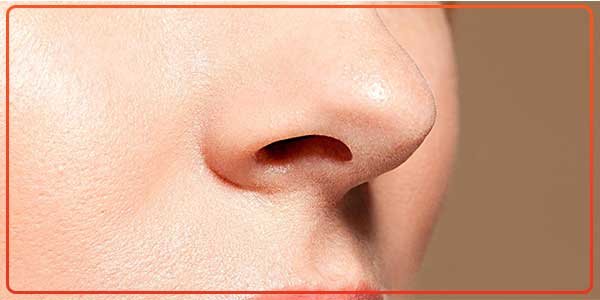
External nose issues are usually less serious than internal nose issues, but they can still be devastating. One of the most common problems is that the surgeon fails to properly shape the nose, which can leave the patient with an unattractive appearance.
In some cases, this can be fixed with a revision surgery. However, in other cases, the damage is permanent. If you’re not happy with the way your nose looks after surgery, you should talk to your surgeon about your options.
1- BRIDGE ISSUES
If the bridge of your nose is too high or too low, it can give you an unattractive appearance. In some cases, this can be fixed with a revision surgery. However, in other cases, the damage is permanent.
2- NASAL TIP ISSUES
If the tip of your nose is too pointy or too bulbous, it can give you an unattractive appearance. In some cases, this can be fixed with a revision surgery. However, in other cases, the damage is permanent.
3- Twisted Nose issue
If your nose appears twisted after surgery, it can give you an unattractive appearance. In some cases, this can be fixed with a revision surgery. However, in other cases, the damage is permanent.
Some common mistakes made during nose jobs
- Making the nose too small or too big
- Making the bridge of the nose too high or too low
- Making the nose too pointy or too bulbous
- Making the nose appear twisted
- Failing to properly shape the nose
WHAT IS REVISION RHINOPLASTY?
Revision rhinoplasty is a nose surgery that is performed to improve the results of a previous nose surgery. It can be performed for aesthetic reasons or to correct functional problems with the nose. The most common reasons for revision rhinoplasty include dissatisfaction with the previous results, the development of scar tissue, and breathing problems.
Revision rhinoplasty is a complex surgery that requires extensive knowledge and experience. As a result, it is important to choose a surgeon who is specifically trained in this type of surgery. The surgeon will evaluate the existing nose and develop a plan to achieve the desired results. In some cases, revision rhinoplasty can be performed using the same incisions as the previous surgery.
However, in other cases, new incisions may be necessary. Revision rhinoplasty is typically a more complex and lengthy surgery than primary rhinoplasty. As a result, patients should expect a longer recovery period. However, revision rhinoplasty can provide significant improvements in both function and appearance.
How to know if you need a revision rhinoplasty
It’s not unusual to feel dissatisfied with the results of your rhinoplasty soon after surgery. After all, it can take up to a year for all the swelling to go down and for you to see your final result. However, if you feel like your nose doesn’t look the way you wanted it to or that it’s interfering with your breathing, it might be time to consider a revision rhinoplasty. Here are a few things to keep in mind if you’re thinking about revision surgery:
First, revision rhinoplasty is a complicated surgery, so it’s important to choose a surgeon who is experienced in this type of procedure.
Second, revision surgery is often more expensive than initial surgery, so make sure you have a good understanding of the costs involved.
Finally, revision rhinoplasty can be a very rewarding experience, but it’s important to have realistic expectations about the results.
How to pick the right surgeon for you
The most important thing to remember when choosing a surgeon is to make sure they are qualified and experienced in revision rhinoplasty. Here are a few things to look for when choosing a qualified surgeon:
- Board certification: Make sure your surgeon is board certified by the American Board of Facial Plastic and Reconstructive Surgery.
- Membership in professional organizations: Good surgeons are often members of professional organizations, such as the American Academy of Facial Plastic and Reconstructive Surgery.
- Extensive experience: Choose a surgeon who has extensive experience performing revision rhinoplasty.
- Good communication: Make sure you feel comfortable communicating with your surgeon. You should feel confident that your surgeon understands your goals and can help you achieve them.
The consultation
During your consultation, your surgeon will evaluate your nose and discuss your goals for surgery. Be sure to ask questions and express any concerns you have about the procedure. Once your surgeon has a good understanding of your goals, they will develop a surgical plan to achieve the desired results.
FAQS
Q: What are the most common reasons for revision rhinoplasty?
A: The most common reasons for revision rhinoplasty include dissatisfaction with the previous results, the development of scar tissue, and breathing problems.
Q: How do I know if I need revision surgery?
A: If you feel like your nose doesn’t look the way you wanted it to or that it’s interfering with your breathing, it might be time to consider a revision rhinoplasty.
Q: What are the risks of revision surgery?
A: Revision rhinoplasty is a more complex surgery than initial rhinoplasty, so there are additional risks involved. These risks include bleeding, infection, and scarring.
Q: How can I choose the right surgeon for me?
A: Look for a surgeon who is qualified and experienced in revision rhinoplasty. Board certification, membership in professional organizations, and extensive experience are all good indicators that a surgeon is qualified.
